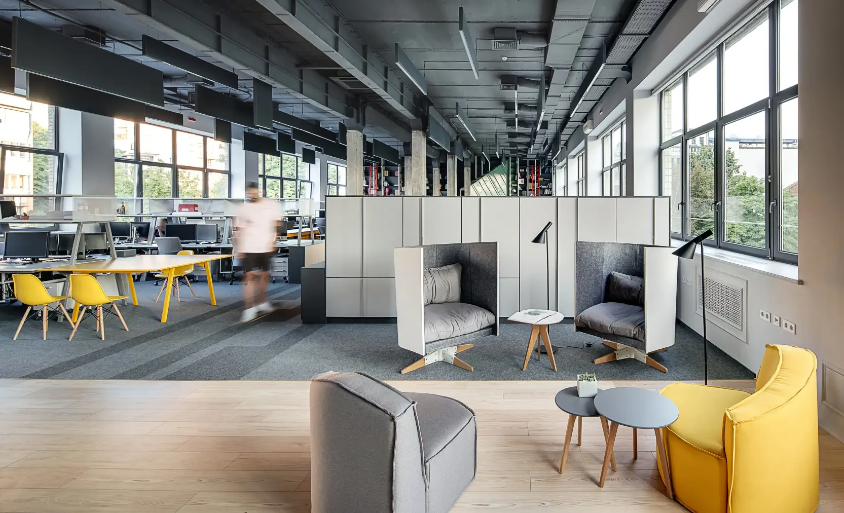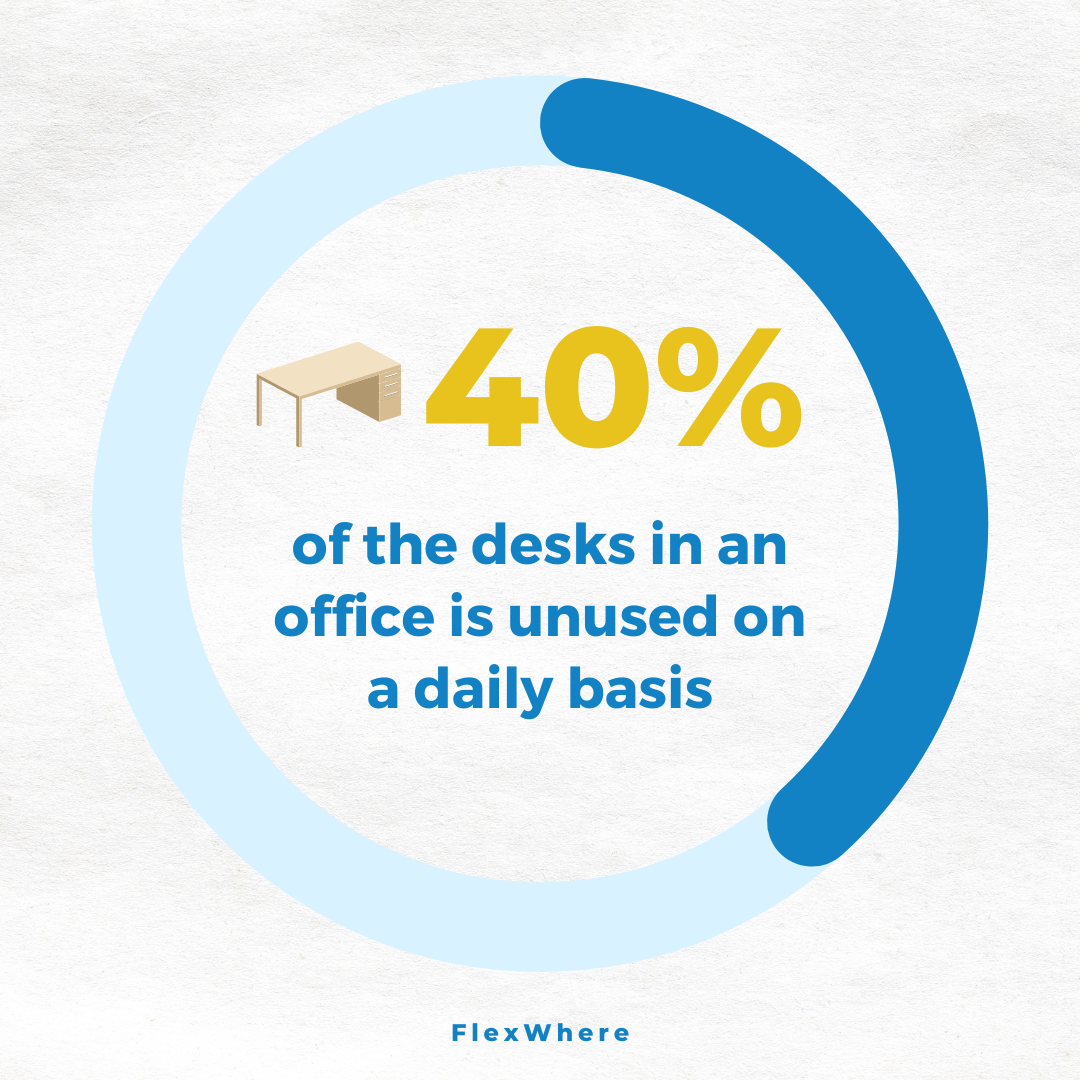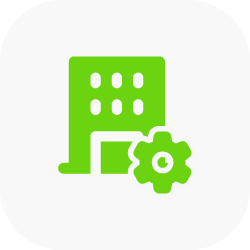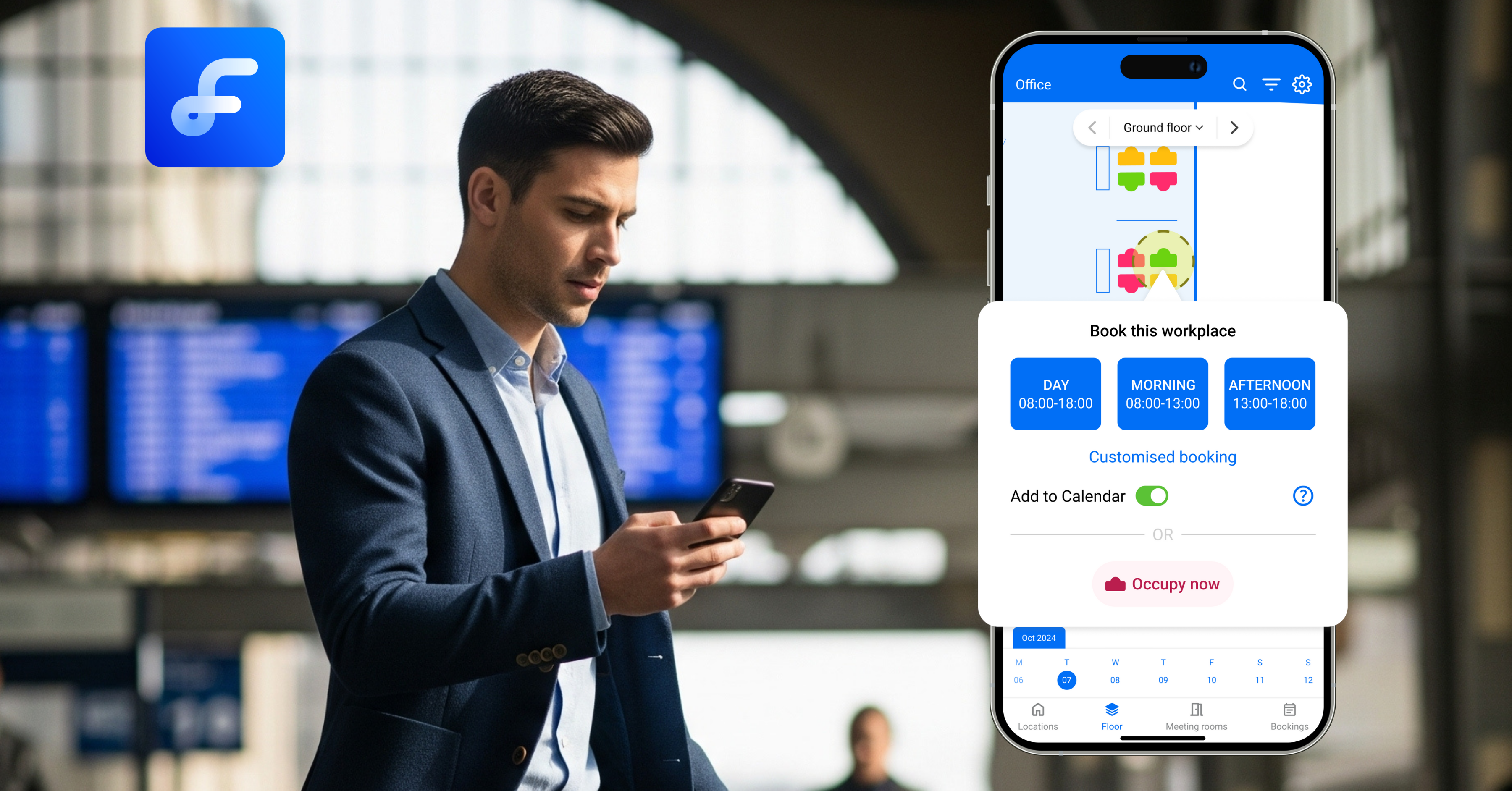
Hot Desking is Hot
 Contents
Contents
The Next Step in Flexible Working
We can hardly call flexible working the "new" way of working anymore. By now, we've become quite accustomed to working at any place and at any desired time. A majority of working people in the Netherlands opt for a hybrid way of working. However, not every employer has yet managed to efficiently organise the reservation of workspaces in the office. This is a good reason to delve deeper into the phenomenon of "hot desking."
Hot desking is the trendy name for the flexible use of an office desk or meeting room by multiple employees at different times. Workspace usage follows the principle of first come, first served. Even before the pandemic accelerated things, employers were already looking for ways to save on real estate. Now that the pandemic is over, it turns out that many desks in offices remain unused, sometimes even more than half the time. Companies can make do with smaller office spaces that can be used much more efficiently. This can result in significant savings on real estate expenses – up to 30 percent. Eliminating excess office space is just one of the many advantages of hot desking.
[1]

Many Benefits
Another advantage of hot desking is that it increases employee productivity. Various studies show that employees of companies with hot desking feel more productive, efficient, and creative. The next generation entering the labour market finds flexible working very important. Organisations that offer hot desking create an attractive environment for Generation Z – born between 1996 and 2012. When it comes to recruiting and retaining young talent, these companies certainly have an edge.
Thanks to hot desking, employees come into contact with other teams sooner. This promotes open communication between different disciplines, leading to better mutual understanding. It also improves collaboration within and between teams. Existing relationships are strengthened, and new connections are developed. For example, if five different departments are involved in one project, hot desking makes it easy to bring the various project members together regularly.
Hot desking encourages hybrid working and, consequently, employee autonomy and satisfaction.

What is needed for hot desking?
To make hot desking attractive, it is essential to transform the office into a shared and collaborative space. Smaller areas with break spots, meeting rooms, desks, and phone booths. A general relaxation area for social interaction also works well.
You can use hotdesking without making a reservation. Many of our customers do this too! Another great advantage of Flexwhere is that you know where your colleagues are sitting and are therefore more inclined to come to the office quickly for collaborations. Flexwhere is a tool that supports collaboration, job satisfaction, and projects. Knowing where your colleagues are sitting and/or if there is space and room in the office offers enormous opportunities.
Not only employees benefit from Flexwhere. For employers or facility managers, the app offers various analysis options to optimise the office layout. Usage trends become visible, as does office occupancy. This form of workspace management provides many opportunities for efficiency improvements and cost savings.
Do your company and your employees a favour and embrace hot desking. It increases job satisfaction and, therefore, productivity.
Flexwhere Makes Hot Desking Work
[1] Pochepan, J. (2019, October 22). Here's What Happens When You Take Away Dedicated Desks for Employees. Inc. https://www.inc.com/jeff-pochepan/heres-what-happens-when-you-take-away-dedicated-desks-for-employees.html
























%20(1).png)



